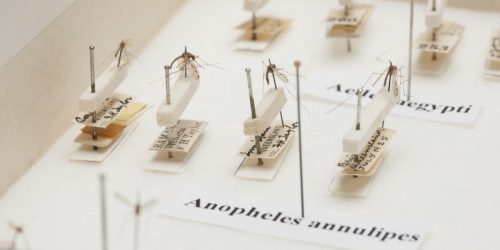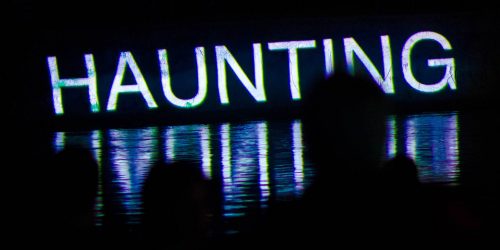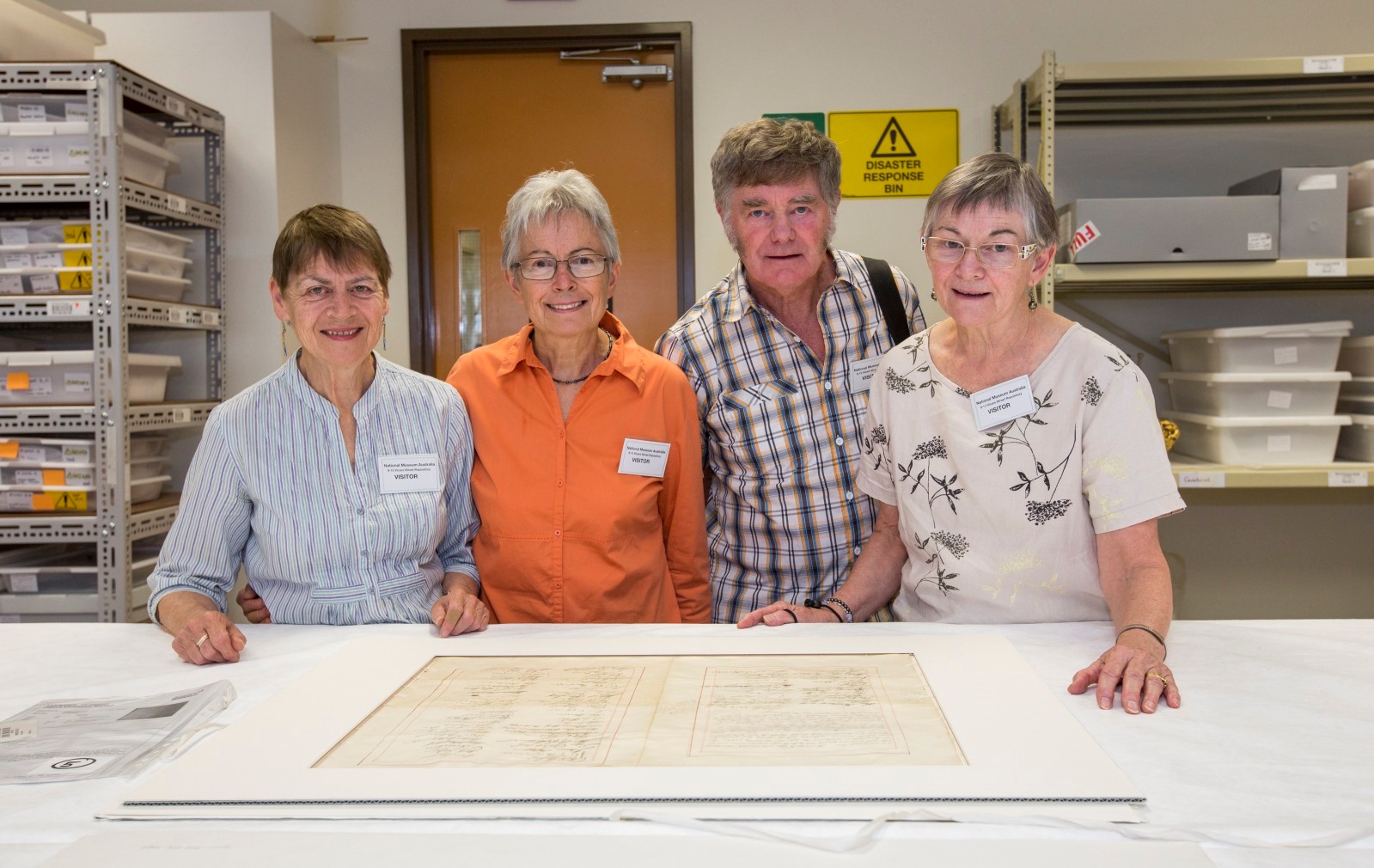Captured: the art of photography

Last week I attended the opening of The Australian Geographic ANZANG Nature Photographer of the Year 2014 exhibition at the South Australian Museum, in Adelaide. It was wonderful to be amongst the excitement as the competition winners were announced. Celebrating the landscapes and animals of the Australasian region, the competition attracts the amazing talents of thousands of photographers each year. I went to the exhibition opening with one of the finalists, Ruth Smith – a friend and contributor to the National Museum’s Landmarks gallery – and enjoyed the opportunity to reflect on her work and the art of photography.
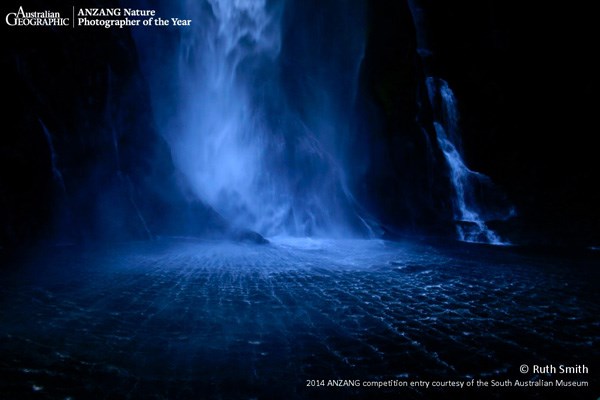
Ruth’s entry in the Australian Geographic ANZANG Nature Photographer of the Year 2014, is ‘Stirling Falls’, a moment of falling and rippling water at the bottom of one of the glacier-fed waterfalls of Milford Sound, New Zealand. In her artist statement, Ruth said: “I loved the way the spray created intricate spider web-like ripples across the seawater at the base. The bow of the boat nosed in so close to the falls that I had trouble preventing my lens from clouding over, but was delighted to have captured this ethereal image.”
Although not a winner in the Landscape category, Ruth was honoured to have been selected as a finalist from amongst 1442 entries in the competition. In many of the artists statements, the finalists mentioned the conditions of their photography and the lengths they had gone to in capturing the moments and scenes that had grabbed the judges’ attention – patience, dedication and perfecting technique.
The ANZANG exhibition displays the work of 96 finalists in the categories of animal behaviour, animal habitat, animal portrait, botanical, interpretive, landscape, monochrome, our impact, threatened species and junior photography. The overall winner of the competition was ‘Physalia Physalis’ by Matthew Smith, a portrait of a bioluminescent bluebottle jellyfish, exhibiting the beauty of the animal above and below the water.
In celebrating the particular environments and species found in the Australasian region, the exhibition offers insight into those subjects, presenting rare glimpses and considered perspectives. Framed on the walls, the images bring the photographers’ encounters with, and observations of the natural environment into the gallery space. As the guests mingled in the exhibition, discussion ranged across photographic techniques and responses to the subject matter on the walls – the plight of endangered Rottnest Island Quokkas, the impacts of game fishing and whaling, memorable animal behaviour, and changes observed in regularly visited locations.
To view the ANZANG competition image gallery featuring all of the 2014 finalists, visit the South Australian Museum’s website: http://www.anzang.samuseum.sa.gov.au/gallery
Ruth bought her first camera – a tiny Kodak – when she was 15 and was going to live in Japan for a year as an exchange student – “I wanted to document my life there during the year, and it was better than keeping a diary.” When buying her first film SLR camera, she wanted to stay with film, believing it was better but “was spending so much money on developing.” She converted to digital and was impressed by the ability to instantly see the results of her work.
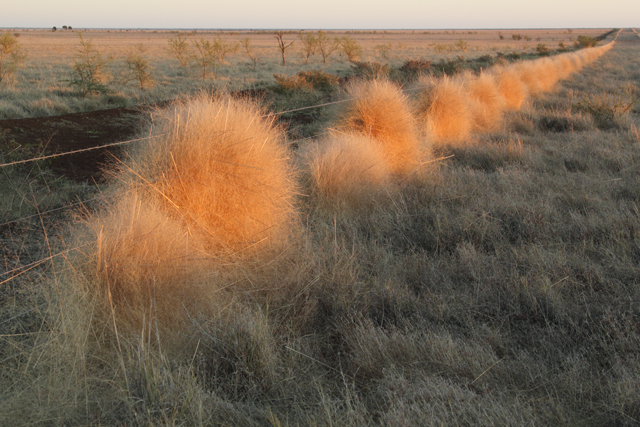
In 2010, Ruth (nee Rickard) submitted a quote to do some photography for the National Museum’s Landmarks gallery, and ended up delivering over 400 photographs of Bowen Downs, a property in central Queensland. Featuring the stories of 34 places across Australia, the Landmarks gallery considers 10 themes in Australian life, exploring how each has unfolded in particular places across the country. It looks at how people have engaged with landscapes, flora, fauna and technologies to develop distinctive Australian communities.
Originally called the Landsborough Runs, Bowen Downs was secured by explorers William Landsborough and Nat Buchanan, in partnership with the Scottish Australian Investment Company, in 1860. As the first manager of Bowen Downs, Buchanan soon discovered the challenges of raising cattle and sheep in this remote region, the territory of the Iningai people, along the Thomson River and its tributaries. Bowen Downs was held by the Scottish Australian Investment Company until 1973, and today it continues as a working cattle station of 35,000 hectares.
Then living in Longreach, Ruth set to the task of capturing a variety of perspectives of the Bowen Downs environment as part of the larger project of communicating the history and understanding the current realities of that place. During a long day of photography Ruth recorded a large variety of subject matter across the property, with the generous participation and guidance of the station caretakers Jenny and Robert Schmidt, and their animals. Reflecting on the shoot, now four years ago, Ruth remembers some of the challenges – “standing in the grass some mites crawled onto my legs and I was incredibly itchy for a couple of days.”
Click on the images below to see some of Ruth’s favourite photos from her Bowen Downs work and her memories:
During conversation, I asked Ruth what makes a good photo? – “a good picture is one that conveys a sense of experience, place or emotion – it is about both the photographer’s work and the viewer’s response. It’s where technical know-how along with an understanding of light and composition combine to reflect the photographer’s take on their subject, which in turn inspires the viewer to consider their own take on that subject.”
And what makes a good photographer? – “a love of light and what light does – shadows, highlights, creating atmosphere. They recognise what their subject is and how to manipulate a composition to make that subject clear. They have good technical understanding and are persistent – sometimes going back to the same place or subject again and again to get the shot they want. You have to be willing to experiment and put time into learning – talking to other photographers and getting out there with your camera – invest time (and money, unfortunately – there’s always another lens!).”
As a curator at the National Museum, I have the privilege of working with a talented team of photographers and am regularly in contact with other photographers working across Australia. Competitions like the Australian Geographic ANZANG Nature Photographer of the Year, help to profile and promote the talents of photographers and the subjects they capture.
The 2014 exhibition of ANZANG photographs is at the South Australian Museum until 30 November. It will then tour to Western Australia and Tasmania.
Click on the links below for further reading:
The Bowen Downs story in Landmarks
Feature image: The Bowen Downs homestead and buildings, 2010. Photo by Ruth Smith. “It was great to capture the winter light and colours of the western Queensland sky.”
